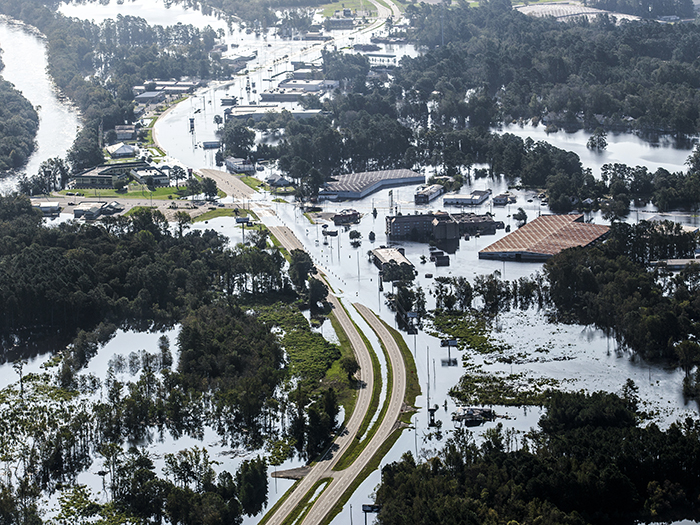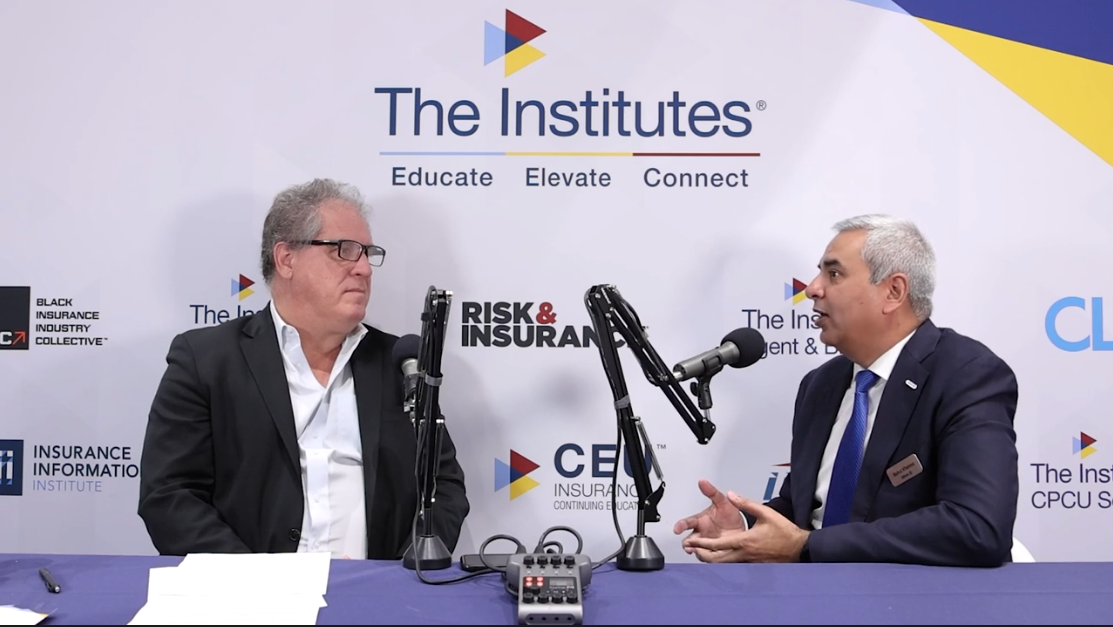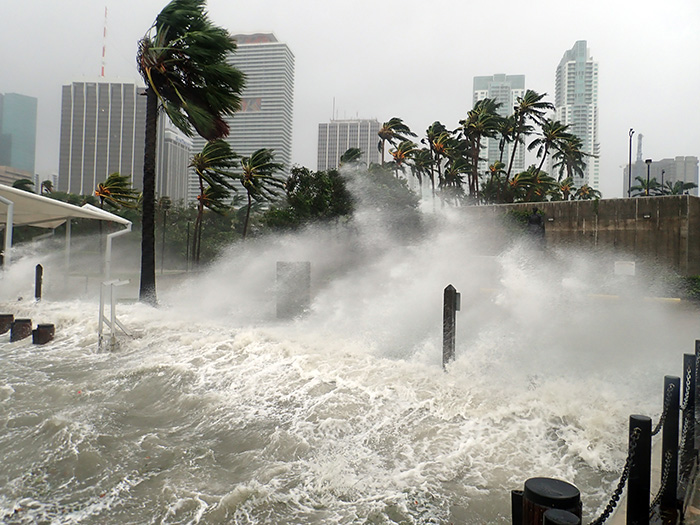Sponsored: Munich Re
Property and Casualty Market Trends Impacting Public Entities — and How to Keep Your Risk Mitigation Efforts Current

The public sector is no stranger to market changes, especially following a year like 2020. A global pandemic, increased civil unrest, growing natural catastrophes and more — each have contributed to the challenges public entities have faced in recent months and have driven how they address risk.
“The main market drivers for property and casualty include the combined ratio deterioration due to COVID-19, natural and manmade disasters that occurred in 2020 and the beginning of 2021, and also the impact of social inflation across the industry,” said Lauren Tredinnick, CPCU, National Accounts and Property Manager, Public Entities Risk Solutions, Munich Re Specialty Insurance.
Additionally, she said, lower investment income due to low interest rates are putting pressure on underwriting decisions being made across the industry right now, further impacting the P&C landscape for public entities.
With the property and casualty hard market predicted to last well into 2021, public entities are feeling the pressure to review market trends and get robust risk mitigation strategies in place today.
Here’s a breakdown of some of the biggest P&C market drivers, the impact they could have on the 2021 renewal cycle, and how this sector can align its policies and procedures to address such changing tides.
Property’s Biggest Trends to Watch

Lauren Tredinnick, CPCU, National Accounts and Property Manager, Public Entities Risk Solutions,
Munich Re Specialty Insurance
With 22 events with insured losses greater than a billion dollars, 30 named hurricanes, 17 wildfires, an unprecedented derecho over the mid-west, and winter storms like the one seen in Texas, the 2020-21 storm season brought with it an above-average year of natural catastrophe activity.
“We can’t ignore the impact of climate change or the impact that it’s having on the property market,” Tredinnick said. “Not to mention several predictions that we’re expecting another above-average hurricane season in 2021.”
These events are driving up losses for public entities and placing added pressure on the space to invest in resiliency efforts. Nat CAT, Tredinnick said, is the biggest concern public entities must keep a pulse on when it comes to property risk.
In addition, there are several other trends to keep an eye on.
One ongoing concern is insurance valuations. Excess coverage will be difficult to place without solid valuations, particularly for public entities already under tight budget constraints. This, Tredinnick said, is an even bigger market trend to watch when taking some of the casualty implications into consideration as well.
“It’s really important for insureds to do what they can to have ongoing plans in place to keep their values current. It will really have an impact, especially on excess placements, where those carriers are expecting recent valuations,” she said.
Aging infrastructure is another big property concern: “We’re finding that, because public entities are at the mercy of tight budgets, it’s becoming more difficult for them to get out and inspect all of their infrastructure. Should an aging building or bridge or road fail, that would have both property and liability implications for the entity.”
Staying up-to-date on maintenance or repair and replacement efforts is key, and that starts with regular inspections, she said.
Finally, something that public entities should be keeping an eye on is auto physical damage coverage —typically covered under property insurance. Recently, however, it seems there’s been a shift to auto liability.
“We believe that this is because property deductibles have been going up as a result of CAT activity. Carriers on the liability side might be hesitant to move auto physical damage into auto liability coverage, because they might not get the same terms and conditions such as wind/hail deductibles they would get under property” said Tredinnick.
Looking forward, these trends are likely to lead to reduced capacity in the property space heading into the 2021 renewal season. Players aren’t necessarily pulling out of the space, but buyers can expect them to reduce the lines they’re willing to put out. Tredinnick said buyers can also expect increased deductibles this renewal, especially in CAT-prone areas.
“Knowing this, it’s key to have an ongoing plan in place that isn’t just a one-year or three-year plan,” she said. “Have an ongoing plan that is constantly updating values. Inspect infrastructure often, especially aging infrastructure. If you can’t get the full inspection, make sure you’re focusing on the aging pieces, because they will have implications on property and liability.”
Also, public entities should have as much detailed information available upon renewal as possible so that carriers are equipped to provide more specific pricing and best meet the entity’s property needs.
The Casualty Landscape at a Glance
On the casualty side, there’s been no greater disruptor to the market than the COVID-19 pandemic, even now, as more places across the U.S. begin to open. The good news: Financial and economic recovery have both appeared to be happening quicker than expected.
“This is largely due to two main factors: Employers protecting their employees and the quick arrival of a vaccine,” said Tredinnick. Because employers put an emphasis on safety, many businesses were able to continue forward during shutdowns in a virtual environment and through enhanced safety measures. Markets also responded favorably to the quick vaccine roll out.
One area to keep an eye on coming out of the pandemic is the Public Readiness and Emergency Preparedness Act, or PREP Act, which provides immunity of liability for entities and individuals involved in the development, manufacturing, testing, distribution and/or administration of counter measures against the present or credible threat to public health.
“There could be protections afforded to public entities under the PREP Act,” said Tredinnick. “We’re recommending entities work with counsel to determine any protections that might be afforded to them.”
Outside the pandemic, several other casualty market trends are also coming to the forefront. For one, sexual abuse and molestation claims are an ever-more pressing issue for public entities, particularly as state jurisdictions lengthen the statute of limitations on reporting. Look-back windows, reviver legislation, as well as even some states suggesting elimination of a statute of limitation altogether are impacting the way public entities approach such claims.
“It’s leading to really long reporting periods. Sex abuse has always been long tail, but with these bigger profile cases taking years to resolve, it extends the tail of this kind of business. And these lawsuits are becoming very difficult to defend,” said Tredinnick.
Carriers, she said, are challenged with underwriting and pricing sex abuse risk. Risk managers, as well, are finding it difficult to protect against such a risk.
Social inflation and nuclear verdicts are exacerbating the issue further — and not just for sex abuse claims. Claims in the past that used to be in the single digit million-dollar arena are now facing double-digit million- and sometimes billion-dollar verdicts. That kind of large payout can be detrimental to a public entity.
“We already know of a couple of states that are going to have future changes that are going to be impacting the capacity available and the carriers that will have the risk appetite in the marketplace,” Tredinnick said.
“Another big thing is judicial hellholes, places in which the American Tort Reform Association documents where judges in civil cases systemically apply laws in court procedures in an unfair and unbalanced manner. The key thing about this for public entities is that the judicial hellhole list spans the country and spans a large portion of public entities.”
Like property, the casualty market is facing reduced capacity in the wake of these growing trends. Specifically, Tredinnick said, there are less carriers in the public entity space. Recent years have shown a large change in risk appetite for casualty carriers, and a good portion have become selective in the lines of business they’re willing to cover. As an example, coverage for law enforcement has tightened, limiting public entities that manage local police departments and other like professions.
“Limits are changing and deductibles are changing as a result. The amount of capacity available in the market has shrunk in a big way. There’s going to be tighter terms and conditions across the industry,” Tredinnick said.
Having current policies and procedures in place can go a long way for public entities looking to stay ahead of a tightening market.
“We recommend that the entities do what they can to keep their policies and procedures current. They should be working with outside counsel at least every two years, maybe even more frequently than that in the current environment. Laws are changing at a more micro level, even with some of the macro changes going on. It’s critical counsel is familiar with the jurisdiction and is reviewing policies and procedures.”
Finding the Right Strategies to Tackle Growing P&C Needs
From pandemic to Nat CAT, public entities have a lot to address in the property and casualty space, but risk management efforts don’t have to be an added stressor. Partnering with a team that has robust risk management processes in place will allow public entities to gain customized and innovative insurance solutions to meet their needs.
“Munich Re has been in the space for over 30 years,” Tredinnick said. “We’ve been a stable player throughout all market cycles, and this market cycle is no different.”
Consistency, stability, flexibility and commitment are the key to Munich Re’s partnership formula. It is this approach that has enabled the team to make sound underwriting decisions rooted in the relationships built between them and their clients.
“It’s that partnership that allows us to know the accounts very well and allows us to be able to provide recommendations around some of these big concerns and be a stable market,” said Tredinnick.
“The market has a lot of chaos and a lot of disruption going on right now. We’re striving to remain the stable player we’ve always been, and we’re going to continue to make decisions that allow us to be a stable market going forward.”
To learn more about Public Entity Risk Solutions, visit: https://www.munichre.com/us-non-life/en/solutions/specialty-insurance/public-entity-risk-solutions.html.
This article was produced by the R&I Brand Studio, a unit of the advertising department of Risk & Insurance, in collaboration with Munich Re. The editorial staff of Risk & Insurance had no role in its preparation.










